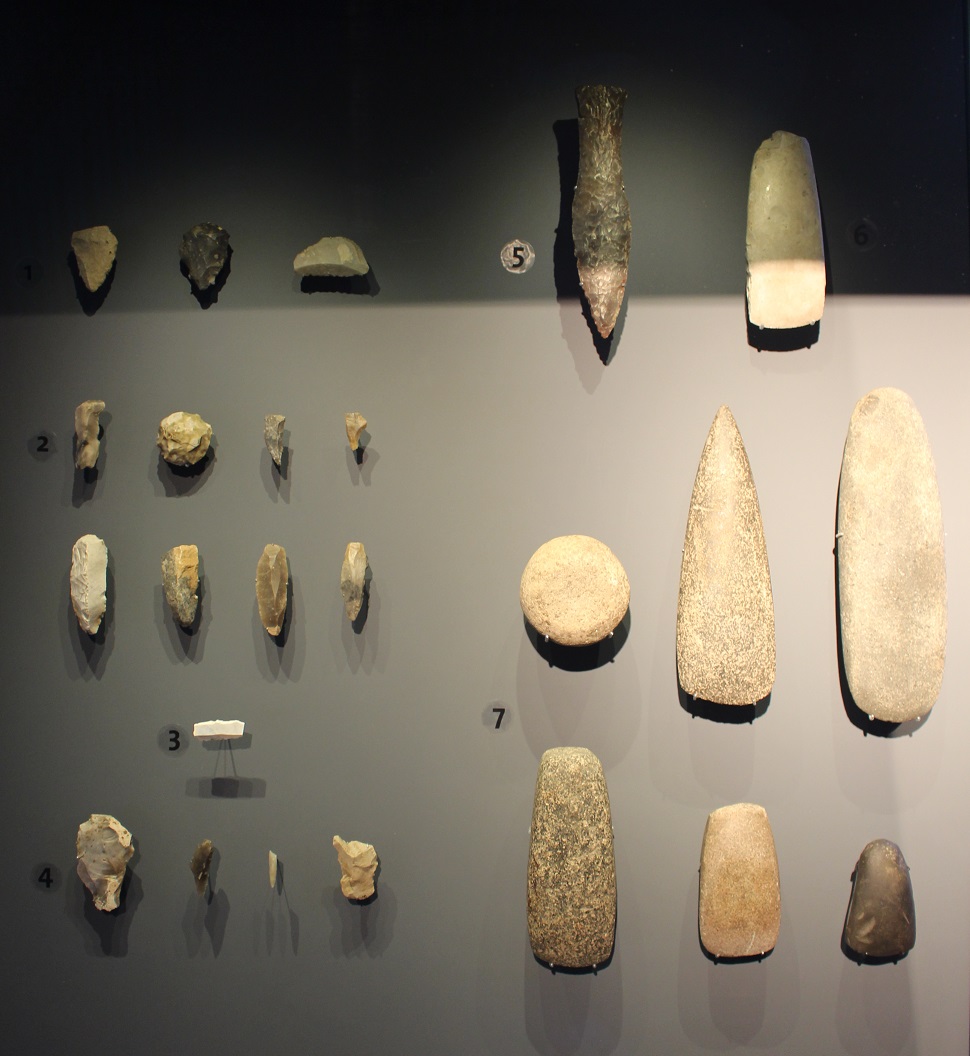
Paleolithic and Mesolithic stone tools (left) ans neolithic stone axes (right), © Museum Hameln
Illustrations tool production
A stone axe is sharpened
The polishing requires skill and patience. The stone is whetted using light pressure so it does not splinter. The blades can be polished until razor-sharp.
If a blade breaks during use, the entire tool is unusable – a heavy loss.
Olaf Oliefka, 2009
Stone blade processing
A flint nodule was shaped as desired using a hammer stone. Then the separation of standardised fragments was possible. The series production of blades from a core stone was a development of the anatomically modern human.
Flint does not occur everywhere naturally, and so it was transported as a raw material.
Olaf Oliefka, 2009
Weapons and tools
The shaft increases the effectiveness of the blades. However, since it was made of organic material, there is hardly any archaeological evidence for it. Using experimental archaeological methods, it has been attempted to discover how the shafts could have looked and could have been fastened.
Olaf Oliefka, 2009
Nutrition
The people of the Neolithic cultivate emmer, einkorn wheat and barley. They also eat peas and lentils. They presumably produce oil from linseed. In addition, they gather wild fruit, berries, hazelnuts, honey and wild vegetables. The farmlands are probably worked using a wooden hook plough. The ripe wheat ears are broken off in tufts or cut with a sickle. The stalks remain behind. The sickles or harvesting knives are made of wood with flint blades.
Olaf Oliefka, 2009
